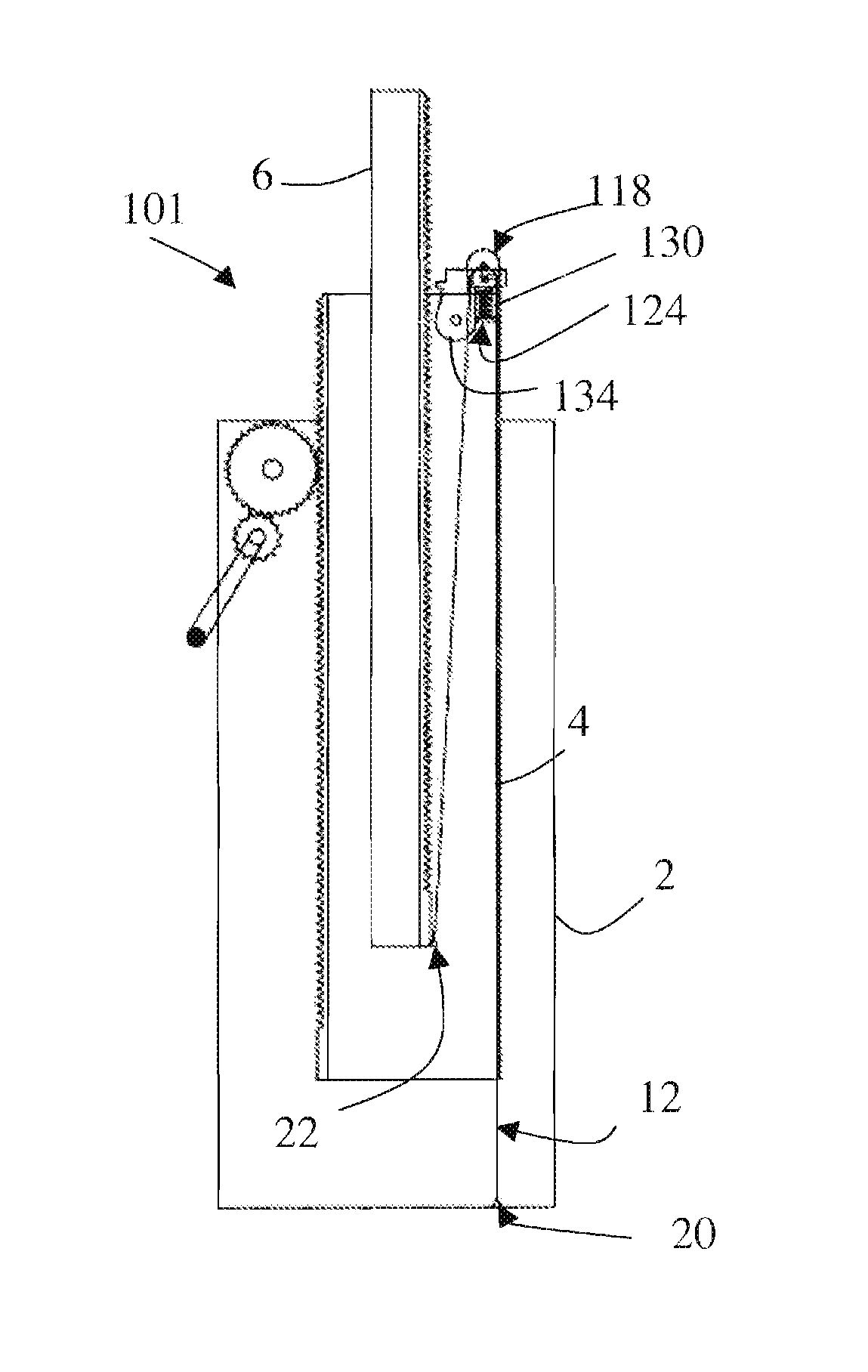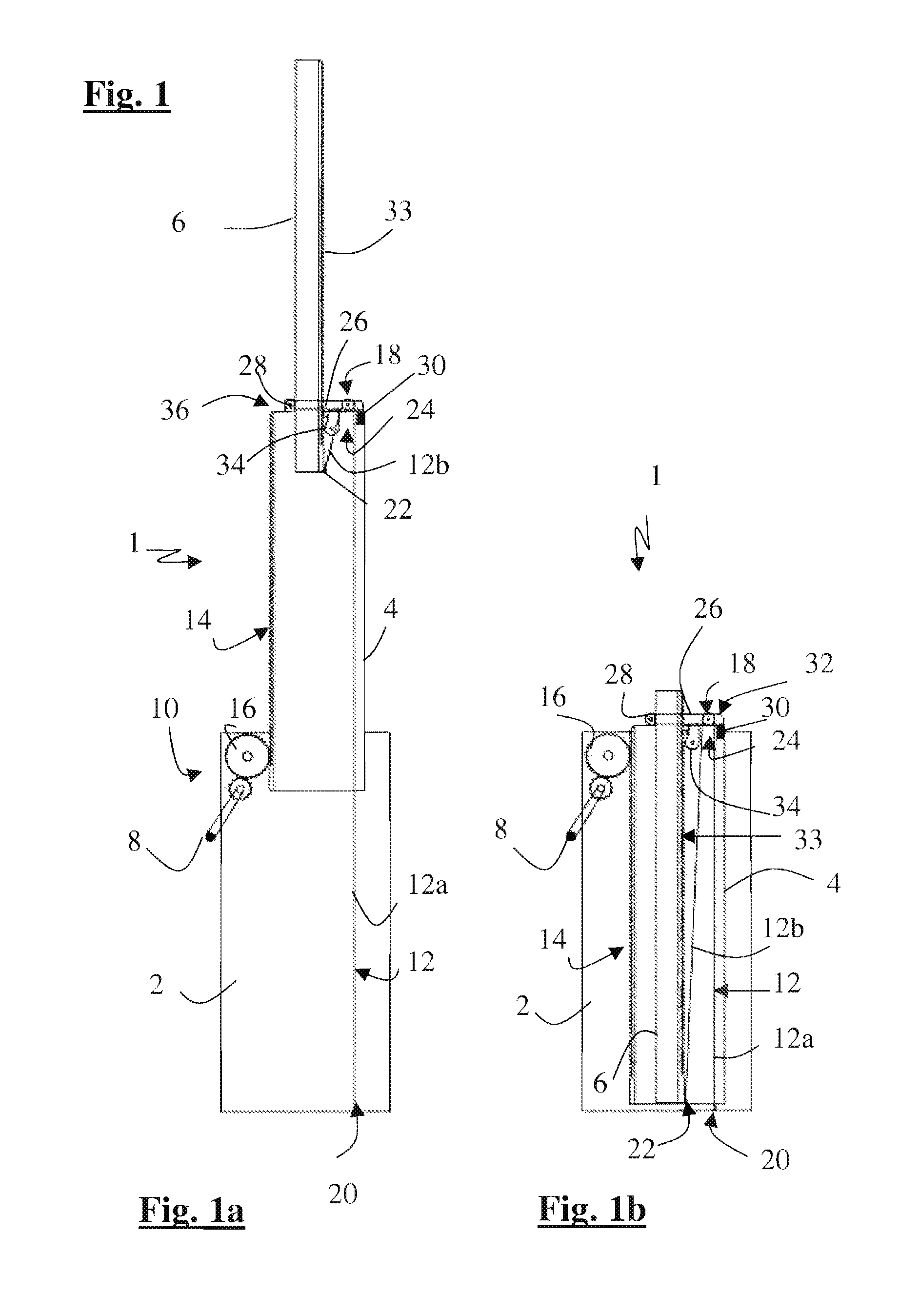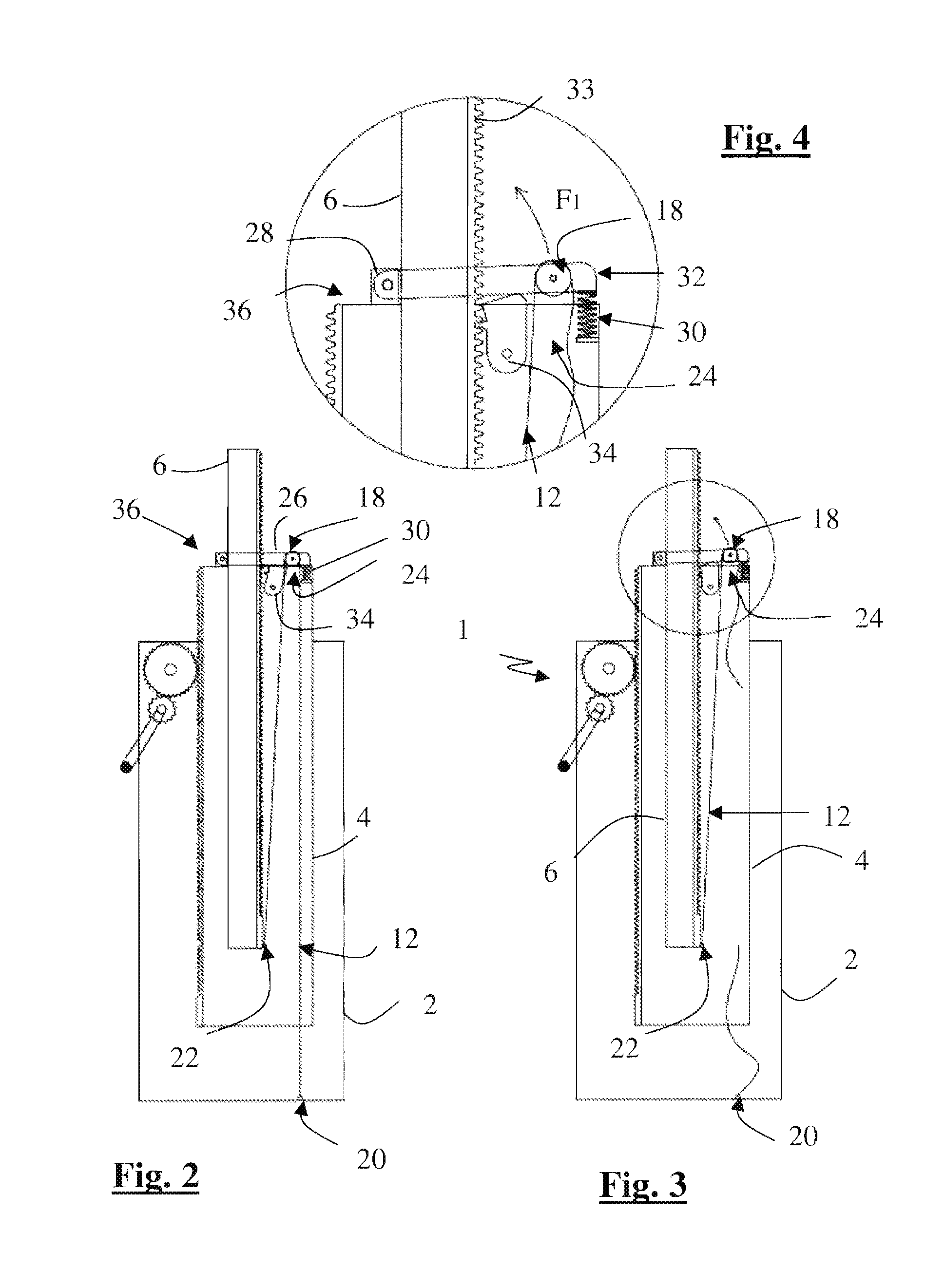Telescopic lifting device with safety strap
a technology of safety straps and lifting devices, which is applied in the direction of safety devices, lifting devices, lifting frames, etc., can solve problems such as the winch system
- Summary
- Abstract
- Description
- Claims
- Application Information
AI Technical Summary
Benefits of technology
Problems solved by technology
Method used
Image
Examples
first embodiment
[0035]In the telescopic load lifting device as illustrated in FIGS. 1 to 4, the lifting device 1 comprises a last module 6 which is slidably movable along the previous intermediate module 4, and a base module 2 along which the said intermediate module 4 is designed to slide.
[0036]The three modules together form a telescopic stage whose extension is obtained by turning the crank handle 8 and by the combination of a rack and pinion 10 and a return strap 12.
[0037]The rack and pinion is used between the base module and the intermediate module. It can be described briefly as follows.
[0038]A gear reduction system connected to the crank handle (which can be fixed or removable) directly drives a rack 14 on the intermediate module. This is coupled with a self-locking friction brake system so that the position of the intermediate module sliding in relation to the base module is maintained whether the crank handle is activated or not. This system can be directly incorporated into the tube or m...
third embodiment
[0060]We will now describe a third embodiment for the invention illustrated in FIGS. 8 to 12. In accordance with the previous methods, the lifting device 201 comprises a three-module pole which has a rack on the last module and a safety system and strap return system on the intermediate module. Here, the safety system 224 comprises a pawl forming a locking system 234 which is hinged to the intermediate module, between an inactive position (FIGS. 9 and 10) in which the pawl is not engaged with the rack and does not prevent it from moving, and an active position (FIG. 8) in which the pawl is engaged with the rack to lock the last module in place. The pawl is directly pushed by the return spring 230 which tends to hold the pawl against the rack.
[0061]The free end of the pawl, opposite the end with the locking pin, is connected to a controller handle 231 by means of a cable 233, in a similar mounting to that of a bicycle brake cable. Pressure on the controller handle pulls the cable tow...
fourth embodiment
[0065]We will now describe a fourth embodiment for the invention, illustrated in FIGS. 13 to 15, which differs from the first method described above in that the safety system 324 does not lock the last module in place by means of a pawl but by jamming the extruded section of the module itself. The guard 326 is mounted so as to be pivotal around a spindle 328 solid with the intermediate module, but is adjusted to fit around the last module. The opening through which the last module passes is dimensioned so that, when the guard tilts under the action of the spring after the strap breaks, the sides of the opening will push against the third tube and prevent it from sliding into the opening. This is where the guard plays the role of a locking system designed to prevent the module from moving under the force of the return spring released by the breaking of the strap. As a result, as illustrated in the figures, the last module does not need to be equipped with a rack.
PUM
 Login to View More
Login to View More Abstract
Description
Claims
Application Information
 Login to View More
Login to View More - R&D
- Intellectual Property
- Life Sciences
- Materials
- Tech Scout
- Unparalleled Data Quality
- Higher Quality Content
- 60% Fewer Hallucinations
Browse by: Latest US Patents, China's latest patents, Technical Efficacy Thesaurus, Application Domain, Technology Topic, Popular Technical Reports.
© 2025 PatSnap. All rights reserved.Legal|Privacy policy|Modern Slavery Act Transparency Statement|Sitemap|About US| Contact US: help@patsnap.com



